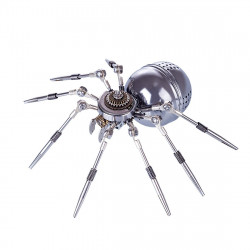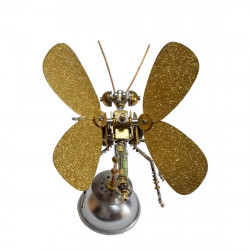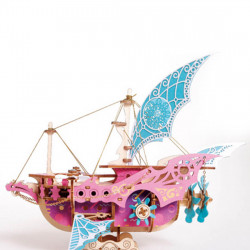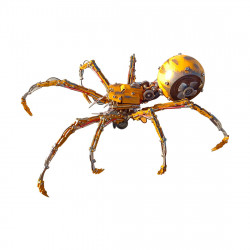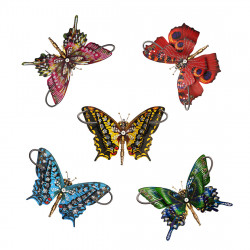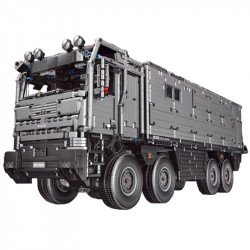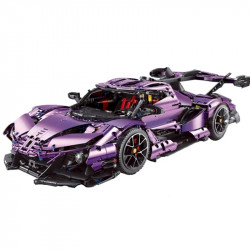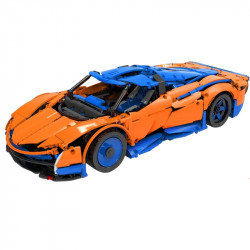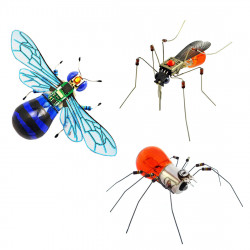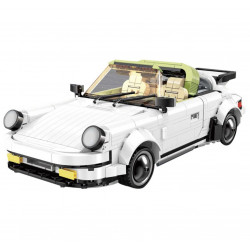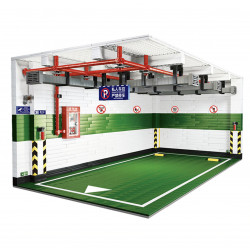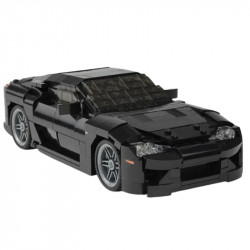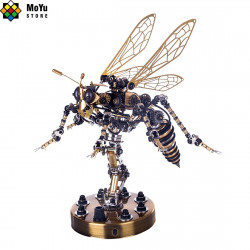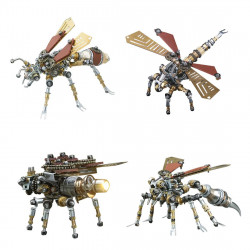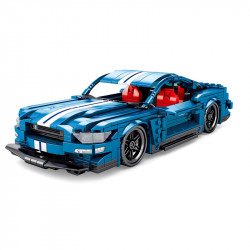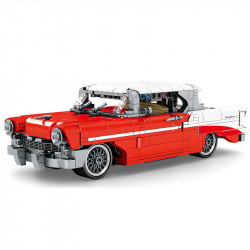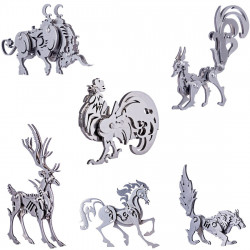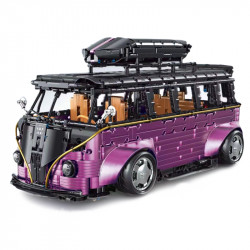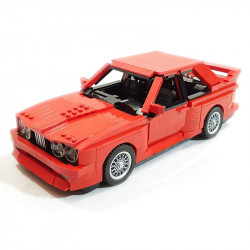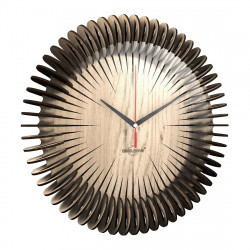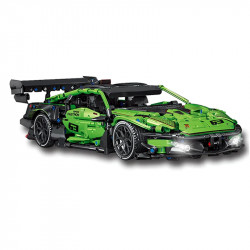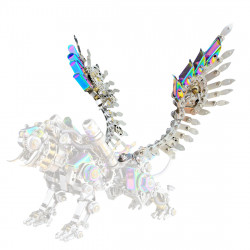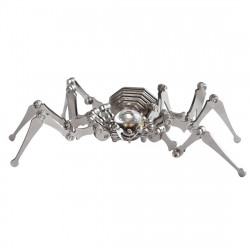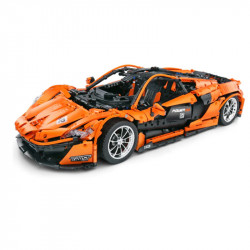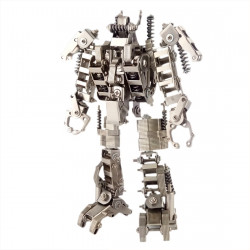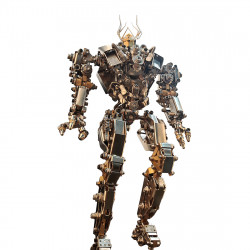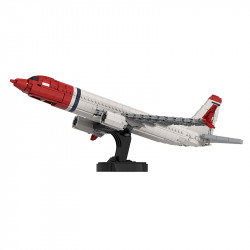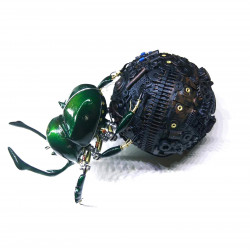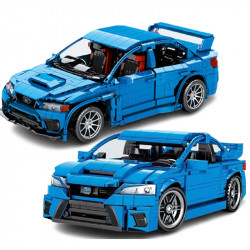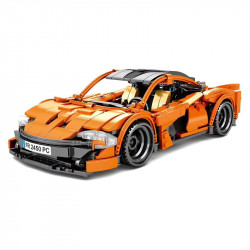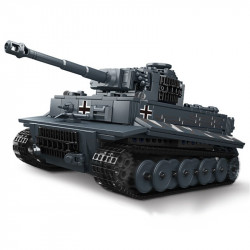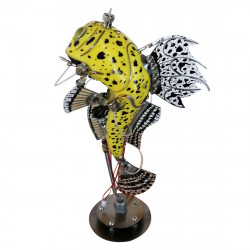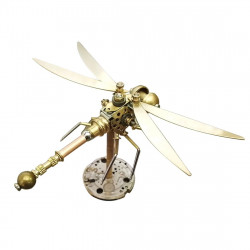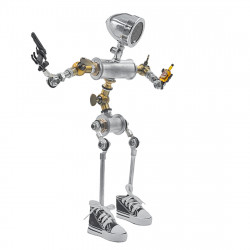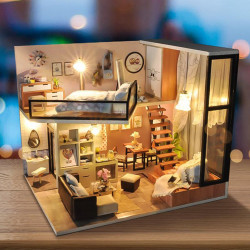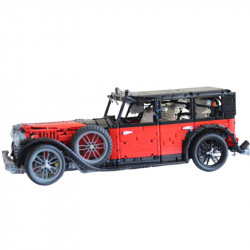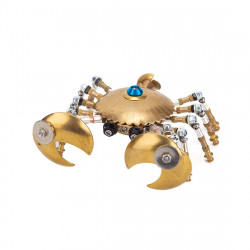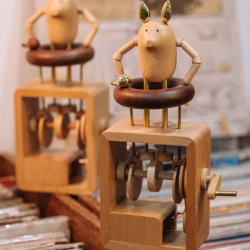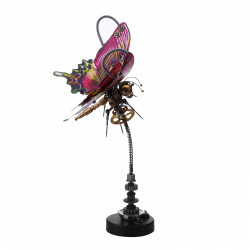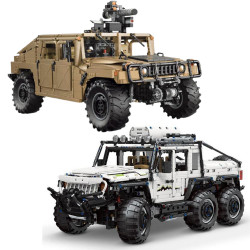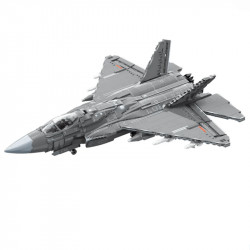Where Should I Start?

Where Should I Start?
People frequently tell me that they like the idea of Metal Earth models but are intimidated by how hard they look. I've also been asked by a number of people what are some good, easy models to start with, and I'm never prepared with a good answer other than "the Bird House model." For this reason, I intend to make a better answer readily available in this post.
Difficulty Explained
Let me briefly review the different approaches taken by the Metal Earth and Metal3dpuzzles brands to assign difficulty before we go into the list of initial models. Furthermore, these approaches are helpful but not conclusive. They aren't often very accurate, and the builder's level of competence frequently determines the actual difficulty. Although defining difficulty levels that apply to everyone equally is impossible, this is at least a place to start.
Both Metal Earth and Metal3dpuzzles have a few sub-brands: Metal3dpuzzles has Q and PC, while Metal Earth has Legends and ICONX. Although there is a faint suggestion of difficulty associated with these sub-brands, it is not as clear-cut as you might expect. Despite having fewer pieces and smaller components, Metal Earth Legends is more complicated than you might imagine. While some of the ordinary Metal Earth models can be considerably more difficult, ICONX models are generally expected to be more difficult. The PC models are smaller (primarily direct imports of Metal Earth models), the Q models are even smaller sheets but appear to have some quite complex designs, and the standard models for Metal3dpuzzles are actually more in line with ICONX in terms of style (sharing the same, larger sheet size).
There are two levels of detail in Metal Earth's reported difficulty ratings. Models were initially divided into four categories: expert, challenging, moderate, and straightforward. In reality, these ratings weren't displayed on the package; they were only accessible on the Metal Earth and Innovatoys websites. They did, however, put a difficulty meter on the back of the packages when they changed the packaging to the darker, black packaging with the green logo. The categories mentioned above were further separated into three sub-gradings by this meter, whereas the first and last categories were split into two.
A relatively constant seven-star difficulty rating system has been used for Metal3dpuzzles models, with more stars denoting more incredible difficulty. As a result, comparing difficulty levels is really simple. However, unlike Metal Earth, Metal3dpuzzles does not (as far as I could find in English) include a handy little chart that illustrates how they classify the model's challenges.
Easiest Models
Two of the models are absurdly essential: the Washington Monument and the previously mentioned Bird House. Additionally, these are excellent examples if you're searching for something straightforward, quick, and straightforward to complete with no effort. However, they are so basic that they don't really introduce you to the activity; therefore, I'm not sure if I would recommend them for trying out constructing Metal Earth models.
Introduction Models
A decent introduction model would offer you a taste of the many methods and procedures used to create the models and, with luck, may provide you with a lot of value for your money.
Additionally, there aren't many models that offer the same payback as the Butterfly models when it comes to value for money (or effort, really). Despite the simplicity of these models, the outcomes are stunning. They are indeed so easy that the directions are printed on the back of the package, yet they aren't so easy that you don't feel like you've finished. Some folds are large and easy, while others are narrow and complex. The best part is that these models let you add your creative touch by adjusting the antennae's shape and the wings' placement.
If butterflies aren't your favourite thing, there are alternative possibilities. Any building with primarily flat surfaces will work if you enjoy architecture, but the One World Trade Center model has been suggested to me as a lovely starter model that also produces good results because it isn't entirely made up of right angles. It also has at least one cylindrical component that teaches you how to shape curves.
The Eiffel Tower replica is another option if you want more creative landmarks. It may sound corny, but it looks good. Additionally, you can eventually advance to the ICONX Eiffel Tower model if you genuinely enjoy it. Although there are some initial difficulties aligning some of the components, this model is relatively simple. Although it has some soft curves, the figure nearly forms itself as it comes together.
For someone more adventurous, I recommend the Mustang P-51. This model is not particularly easy, but it's also not as difficult as it seems; it's made up of a lot of flat surfaces with a few simple curved elements; there are some tight fits on tabs and alignment, but nothing too bad; overall, I believe it provides the most comprehensive introduction and would be a good place for someone who has some experience building classic plastic models to start.
Licensed Models
In actuality, the licensed models are what initially draw most people to the Metal Earth model line. I'm referring to your Doctor Who, Transformers, Star Wars, Marvel, and Harry Potter models, among others. Unless you're as obstinate as I am, I wouldn't say that most of these models are the finest beginner models, even though they look fantastic. Additionally, despite their seeming simplicity, several of the Legends models are challenging to use. I can offer you some advice on some of the more straightforward (not simple in and of itself, more concise than the others) licensed models, though, if you're serious about getting started in this field.
I totally understand why the Star Wars license is one of the most often used licenses. I became interested in the pastime because of it. However, the majority of the Star Wars models are not suitable for beginners. That has to do with the fact that designers are unable to truly simplify some elements, unlike with buildings or original model designs, because they must have specific levels of detail to resemble the real thing. That obviously holds for the majority of the licensed content. I'm getting off-topic, though. The Imperial AT-AT model is probably the one model I suggest as a potential starting point, and it would have to be Star Wars. Additionally, don't let the Star Destroyer or Tie Fighter models deceive you. Despite their apparent simplicity, there are some unpleasant small surprises concealed in the intricacies.
I recommend one of the Guardians of the Galaxy Legends replicas or Captain America's Shield to Marvel enthusiasts. Never begin with an Avengers Legends model. The legs on those are really annoying, and they were a part of what I refer to as the "Gen 1" batch of Legends figures. But when they released the Guardians, they changed the way the legs were made, and the result was far superior. Although they are significantly more straightforward, those Legends models nonetheless contain a few intriguing moments. As for Cap's Shield, it's straightforward until you make the hand and wrist straps on the rear. Since they are not required, you may obviously stop before then, but if you want to finish everything, you'll need to deal with some tight locations and tiny bits. However, it remains one of the easier choices, particularly in the Marvel lineup.
One piece of advice regarding Transformers: don't begin here. Throughout the Metal Earth series, these are some of the more detailed and demanding models. Unless you are highly tenacious and stubborn and are prepared to use glue and tape to keep the thing together, you should not begin with a classic Metal Earth Transformer model. Here, I can speak from experience. On the other hand, the Legends line can be a good place to start if you truly want a Transformer model. Although I haven't had the opportunity to construct one yet, the Legends Transformers are well-designed and may be easier to create than some of the more human-shaped models.
The main body of this model is a ball, and it requires a lot of time, patience, and nerve to get right. I had built close to a hundred models before I built my Golden Snitch, and I still ended up with a lopsided gold nugget with wings. So it's going to be challenging to start there. How about Harry Potter?
Next up is Doctor Who. When I learned that they were launching a line of Doctor Who models, I was ecstatic! Naturally, the TARDIS was my first, but I had been building for some time. If I were to start from the beginning and use one of these... I would choose K-9. Even though he isn't the most well-known feature of this property, he has a very straightforward form. Additionally, you receive a few brief introductions to more complex methods.
I can't suggest any of the other licenses' models as suitable beginning models. Though they are all rather complex (even the Bat Signals, which don't seem that difficult until you look closely), Batman, Game of Thrones, and Star Trek all provide some excellent examples. The Legends and Legends-like models from the Lord of the Rings, My Little Pony, and Looney Tunes series are all more challenging than what I recommend for introduction models. Western Star, Freightliner, and CAT are also out since even the remaining non-fictional licenses are too complicated. Boeing is taken care of by the Mustang P-51, which I just discussed above.
Detecting Difficulty
I wanted to take a moment before I wrap up this post to highlight a few ways you can look at the models and get a sense of how challenging it will be. And while the method I'm going to describe here is my own, it's simply adaptable to your unique skills.
Finding the strategies that you find difficult is the first step. This assumes that you have constructed some models, but that is fine; a few methods or forms that I believe are frequently regarded as brutal are listed below:
Creating curved surfaces, including tapering cylinders, balls, domes, cones, and cylinders.
Aircraft, you have my attention with your long, narrow folds that are really close to one another!
Components that fold into octagons or hexagons
Small, small pieces or several sections near one another
(coloured models) Take care not to scratch the paint!
Internal tabs that must be folded or twisted
By closely examining a model, the majority of these issues can be found. Additionally, viewing it from multiple perspectives is beneficial (extra points for using a 360-degree view posted on the Metal Earth website). Looking at a model in this way allows you to have a fair idea of what you'll be up against by counting the number of occurrences. You can, however, go above and above by reading the model's instructions, which are typically available on the Metal Earth website, to see what you'll face. And because of all the tab folds and twists inside the arm and leg cylinders, I was initially put off by the Iron Man model, but this is an excellent way to test the final bullet point on the list.
The social approach is also an option, of course; you can always ask someone. Seek out someone who has constructed the model and shared information about it on YouTube, Reddit, or Instagram. Find out what people think or whether they have added any information to the posts. I'm going to promote the builders' community that has developed around this pastime once more; it's full of outstanding and supportive people! Thus, make contact, seek assistance, gather, and work together. The sheer number of people who are prepared to lend a hand may astonish you.
Correct Me, Please!
I'm sure I'm overlooking some excellent ideas for beginning models because I haven't built every Metal Earth model available (yet). Some of the models on this list were indeed suggested by others on Reddit, Instagram, YouTube, and other websites rather than by myself. I've read and taken in the answers to the beginner model question, but I'm not sure who said enough to give credit (sorry!) properly. In any case, leave a comment on this post to contribute to the list of recommendations. Here, I'll attempt to update this post with a current list of recommended models:
Whoa, so many excellent ideas already! Regarding the Golden Gate Bridge, I wholeheartedly concur and feel foolish for omitting it from my initial list. Maintaining organization while working with tabs is a game, but it's still pretty simple. Another simple one is Big Ben. However, some people are unsure if the clock faces should protrude or be sunken. Because they are primarily flat surfaces that align at right angles, skyscrapers are an excellent choice!
Additionally, by recommending the Guitars, Ferris Wheel, and Huey, AnimateOrange demonstrated his gumption. With the exception of the Ferris Wheel, I also concur with the majority of them. For an introduction, those tiny "cars" could be a bit too detailed and repetitious. On the other hand, I recommend the guitars and helicopter to anyone looking to begin with a little bit more difficulty, but not too much. The Huey is more straightforward than it appears, and the guitars are reasonably concise, with the initial issue being to round the sides of the guitar body to fit the design. Bonus: a number of the models mentioned in this post are featured in his Beginner playlist on YouTube!
I received some further suggestions, the first of which was to use one of the Space Shuttles. Though I wasn't sure if the engines and thrusters would be too annoying, I had thought about integrating this. Additionally, the cockpit window can be challenging, and there are some tight tabs underneath. For someone who wants to try something a little more complicated, though, it's still a solid recommendation. As an interesting side note, the Space Shuttle models are nearly identical; in fact, the Metal Earth website uses images of the Atlantis model for all of the Space Shuttle models.
Other ideas that were submitted included ideas for the TNG Enterprise and the Klingon Vor'cha, a second idea for the guitars, and a recommendation for the dragonflies. Because it can be a nice one for someone a little bold, I put the dragonfly on the list. It isn't enjoyable, but it provides you with some good practice with curved surfaces. Additionally, you should check out the Scorpion if you enjoy that one.
Regarding the Star Trek models, I will remain faithful to my first assertion. It's not too hard to build a model like the TNG Enterprise. However, balancing is challenging. It persisted in collapsing forward each time I built it instead of standing erect on its support. In order to ultimately get it to stand up, I had to add a lot of extra weight inside the nacelles the second time (and actually trim out some unnecessary metal inside the saucer part). That doesn't seem like a suitable introduction.
Additionally, the Vor'cha could be an excellent first model for someone who enjoys a challenge. I am reluctant to suggest it, though, because I had a negative experience with it (I put the bridge section together incorrectly and had to disassemble and reassemble everything). Additionally, it appeared to have some alignment problems, with pieces failing to fold into the recommended shape, particularly when joined to other parts.
